On December 16th, Lucasfilm and Disney will release Rogue One: A Star Wars Story, the first in what will presumably be a long line of auxiliary films set in the Star Wars universe. The movie’s plot centers around the theft of the secret plans to the Death Star by the Rebel Alliance, an event in the Star Wars timeline first covered in the 1995 first-person shooter Star Wars: Dark Forces. Let’s take a brief look at how the PC title came to be.
The release of DOOM for PC in 1993 was a significant milestone in gaming, and modding was one of the many things it pioneered. After seeing how gamers had tried to hack custom content into Wolfenstein 3D, id Software intentionally designed DOOM with an engine that was separate from its other assets in order to make it easier to add to or change the game’s art, sound, and levels. By 1995, there was no shortage of user-created mods, the most extreme of which were total conversion (“TC”) packs that changed almost all of the game’s resources. One of my local malls hosted an electronics show around that time, where I found a booth that sold all kinds of DOOM mods on 3.5” diskettes. I remember being intrigued by one that replaced the game’s chainsaw weapon with a lightsaber and thinking how amazing it would be to play an entire first-person Star Wars game.
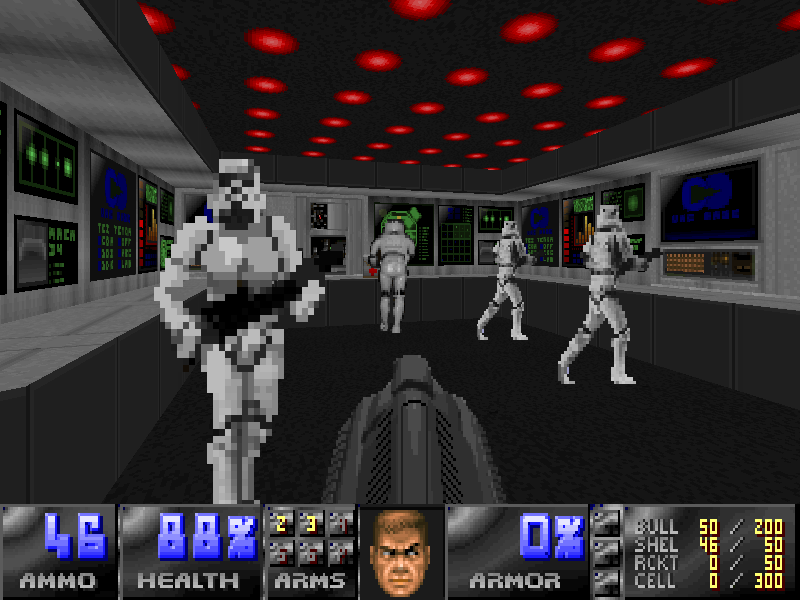
I wasn’t alone; there eventually was a mod called Star Wars DOOM that added sound effects straight from the movies, swapped demons for stormtroopers, and featured levels that re-created environments from the films. During a 1999 Slashdot interview, John Carmack said, “I still remember the first time I saw the original Star Wars DOOM mod. Seeing how someone had put the death star [sic] into our game felt so amazingly cool. I was so proud of what had been made possible, and I was completely sure that making games that could serve as a canvas for other people to work on was a valid direction.” Demand for an official DOOM-style Star Wars game existed, but only one company could actually produce it – and fortunately, development was already underway.
LucasFilm Games was founded in 1982, and although it was a division of LucasFilm Limited, the license to make games based on Star Wars belonged to Brøderbund Software at the time. Later renamed ‘LucasArts’, the company spent its first decade developing many critically-acclaimed original titles, including a few that starred Indiana Jones (another Lucasfilm property). When the rights to Star Wars games reverted to LucasArts in 1992, it was perfectly timed to capitalize on the revitalized public interest that followed the previous year’s publication of Star Wars: Heir to the Empire by Timothy Zahn.
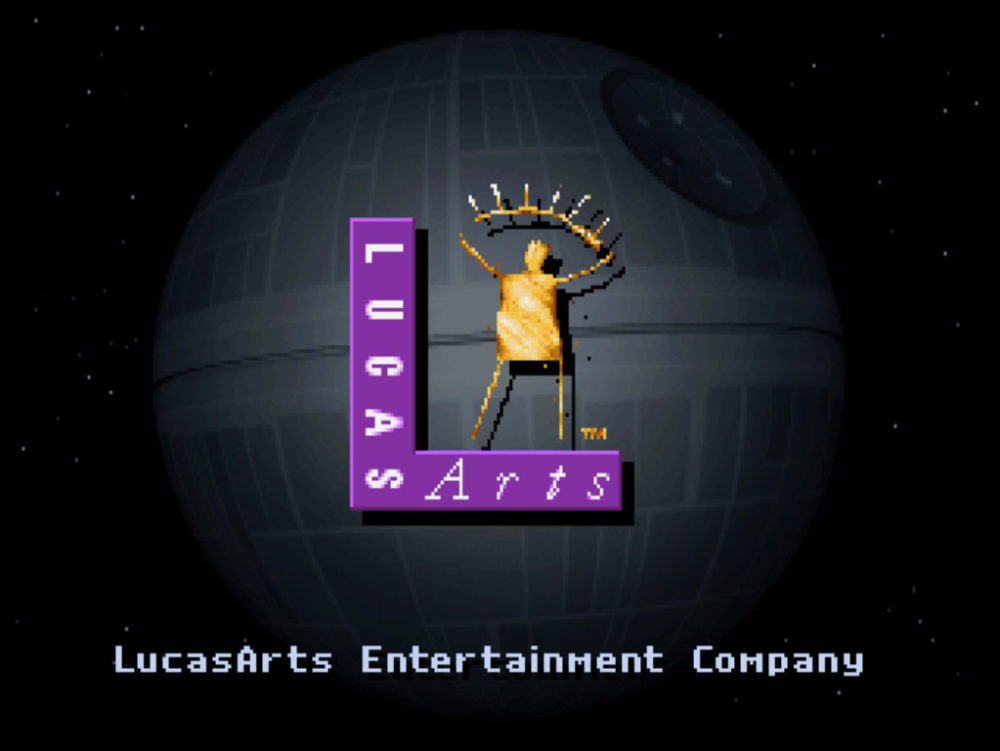
LucasArts released their first two Star Wars titles in 1993: Star Wars: X-Wing and Star Wars: Rebel Assault, and although it’s often regarded as a DOOM-clone, development of Star Wars: Dark Forces began in September that year (before DOOM’s release in December). In the August 1996 issue of Electronic Gaming Monthly, LucasArts’ Daron Stinnett said, “Our original idea came from Wolfenstein 3D and later Doom [sic] . The whole genre cried out for Star Wars. This was evident in the add-on levels people made for Doom that put you in the Death Star.” The final game boasted several mechanics not present in DOOM, such as the ability to jump, duck, and aim up and down.
The decision was made: Dark Forces would have a unique story rather than rehash the plots of the films. Players assumed the role of Kyle Katarn, a mercenary hired by Mon Mothma to execute missions for the Rebellion, the first of which was stealing the Death Star plans. However, Dark Forces’ focus on this event was just as brief as its original mention in the opening crawl of A New Hope. The plans were found in the very first level, after which the game jumped ahead one year. The rest of its missions dealt with Kyle uncovering and shutting down the Empire’s Dark Trooper Project, while the introductory level served as a prologue. Since LucasArts distributed that first mission as the game’s demo, there was value in it being a self-contained episode; having the first exposure for many gamers to first-person gameplay in the Star Wars universe conclude with an accomplishment like stealing the Death Star plans left a strong impression that drew many back for the full game. It was just unfortunate that it so quickly burned through an objective that could have been the basis of an entire game itself.
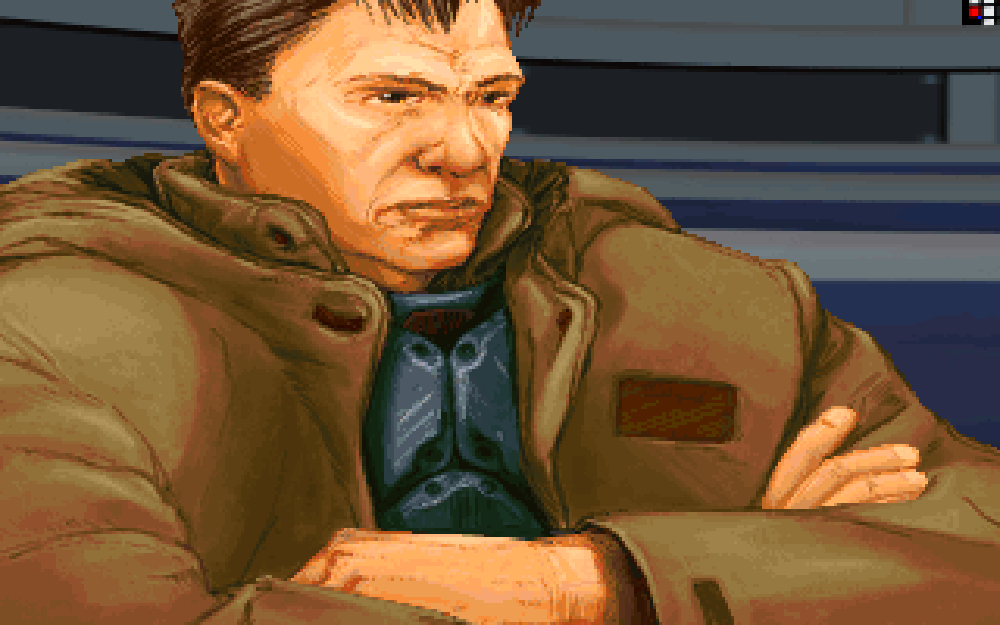
Since LucasArts distributed that first mission as the game’s demo, there was value in it being a self-contained episode; having the first exposure for many gamers to first-person gameplay in the Star Wars universe conclude with an accomplishment like stealing the Death Star plans left a strong impression that drew many back for the full game. It was just unfortunate that it so quickly burned through an objective that could have been the basis of an entire game itself.
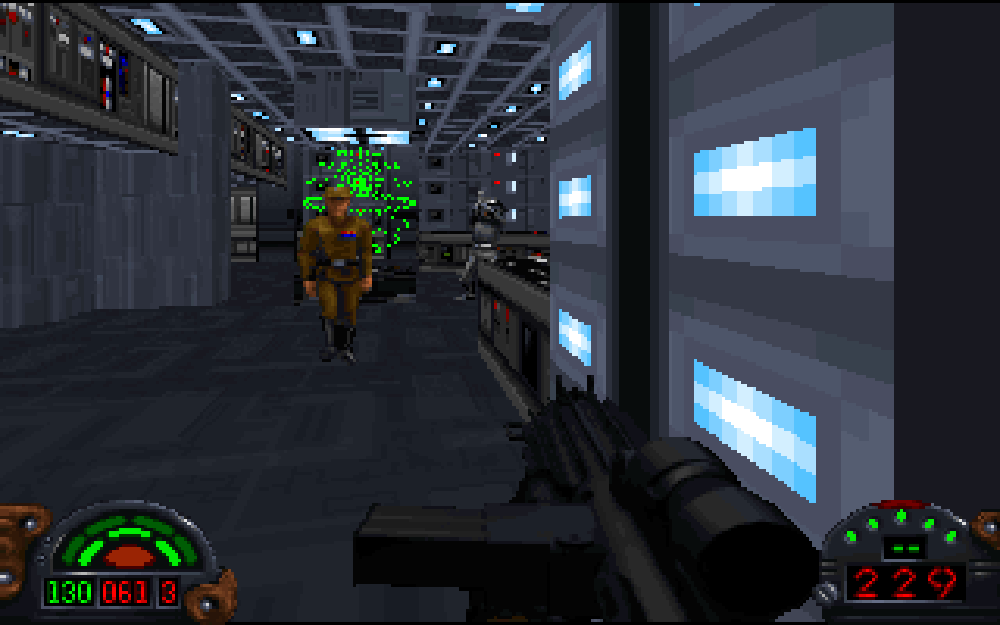
The mission was set on the planet Danuta, a new location for Star Wars that had an Imperial base set in the rock walls of a small canyon. The layout of the level served to introduce the game’s mechanics, such as aiming at stormtroopers on high ledges and finding switches to open secret passages, and didn’t feature any of the advanced challenges that appeared later in the game. Ultimately, the secret plans were downstairs from the hallway in which you start, and when you pick them up Kyle even remarks, “This is too easy.” Kyle operated alone, and there was no battle to cover his mission like the crawl from A New Hope had mentioned.
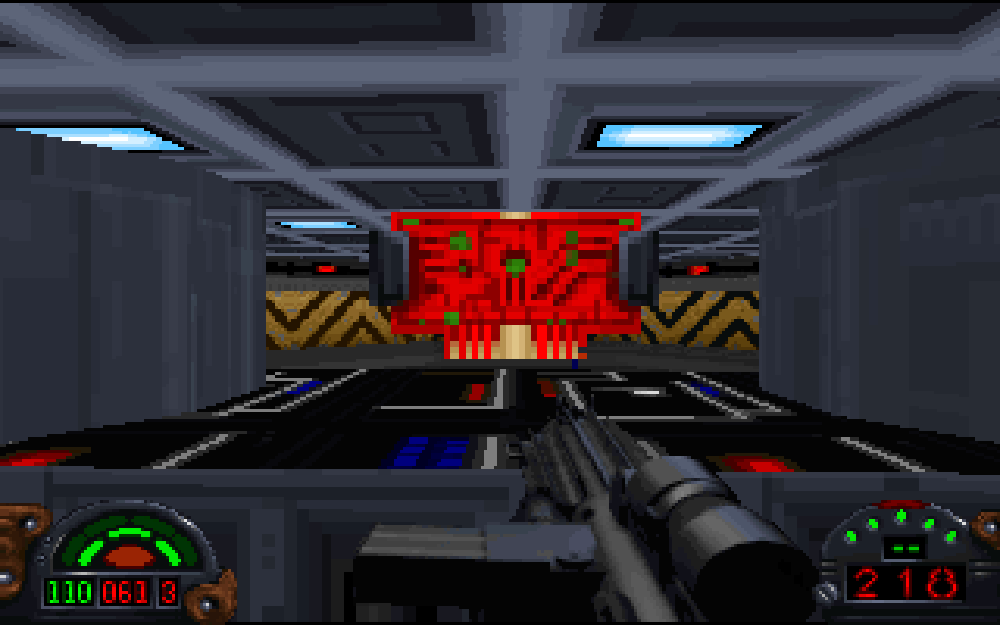
The obvious potential for a more epic version of this event is what brings us to the imminent release of Rogue One. Interestingly, the movie, as portrayed by the trailers, seems to share similarities with Dark Forces post-prologue. Kyle’s mission begins with reconnaissance after a field test of the Dark Trooper decimates a Rebel base, and his investigation eventually involves the infiltration of an Imperial Super Star Destroyer where he confronts the threat. Rogue One’s protagonist is Jyn Erso, which may be a nod to Dark Forces character Jan Ors, who served as Kyle’s mission officer. Mon Mothma brings in Jyn to gather intel on a massive weapons test, leading to her infiltration of an Imperial installation. The movie looks like it will feature the battle during which the plans are stolen, which was absent from the game, and Jyn will work alongside a band of what appear to be mercenaries. Whereas Kyle pursued the Dark Trooper Project, it seems that Jyn will go after the Death Star schematics. Both the game and the movie feature a major Imperial figure in charge of the objective who reports to Darth Vader, Director Krennic in the former and General Mohc in the latter. I’m just hoping that Jyn’s actual acquisition of the plans isn’t as easy as a walk downstairs.
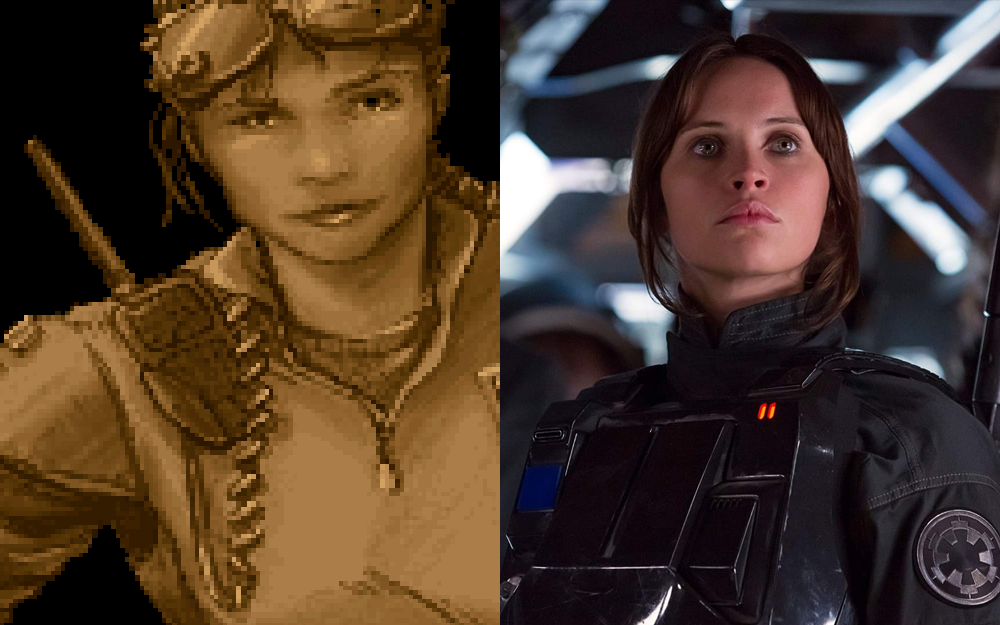
Mon Mothma brings in Jyn to gather intel on a massive weapons test, leading to her infiltration of an Imperial installation. The movie looks like it will feature the battle during which the plans are stolen, which was absent from the game, and Jyn will work alongside a band of what appear to be mercenaries. Whereas Kyle pursued the Dark Trooper Project, it seems that Jyn will go after the Death Star schematics. Both the game and the movie feature a major Imperial figure in charge of the objective who reports to Darth Vader, Director Krennic in the former and General Mohc in the latter. I’m just hoping that Jyn’s actual acquisition of the plans isn’t as easy as a walk downstairs.
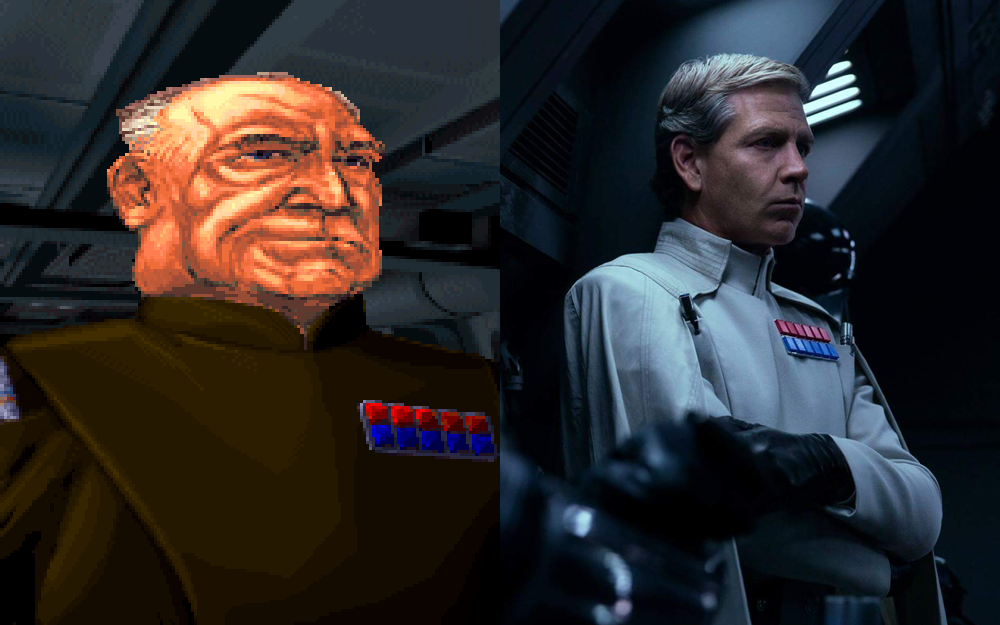
Ultimately, we know that the plans are delivered to Princess Leia, but we have yet to find out the fate of Jyn’s group of spies. Kyle had a long tenure in the old Star Wars Expanded Universe, where sequels to Dark Forces and various novels chronicled his rise as a Jedi. Meanwhile, the Soldier of Fortune trilogy of novellas and the Star Wars: Lethal Alliance game for the PSP and Nintendo DS attempted to further flesh out the mission to steal the Death Star plans, ultimately splitting them into several pieces that were collected from different locations by a number of characters in addition to Kyle.
When the Lucasfilm Story Group announced in 2013 that the EU was no longer canon, Dark Forces and its supplemental material were all reclassified under the ‘Star Wars Legends’ moniker, making them no longer canon but keeping their material ripe for harvest by future official media. Most recently, Disney XD’s Star Wars: Rebels series brought back Grand Admiral Thrawn from the first trilogy of books written by Zahn, so it may only be a matter of time before we see Kyle Katarn again, just minus this particular bullet point from his résumé.
Star Wars: Dark Forces may not have the technical impact it enjoyed in the 90s since video games have advanced so far beyond the days of DOOM, and gamers these days are all too familiar with the first-person shooter genre it helped to shape. While the mission to steal the Death Star plans served its purposes as a prologue and demo, it was ultimately a squandered opportunity for a bigger story. I’m excited to see what new adventure Star Wars: Rogue One – A Star Wars Story delivers when it opens this Friday, and I’ll be back to post my impressions then.


